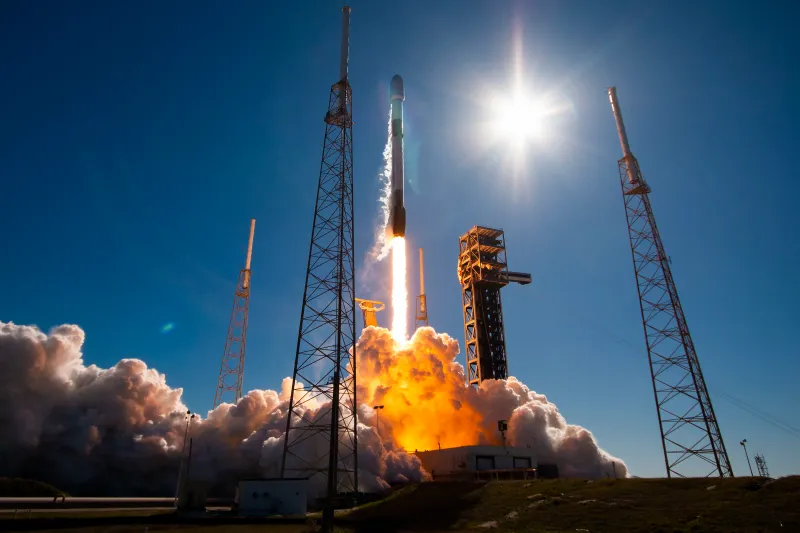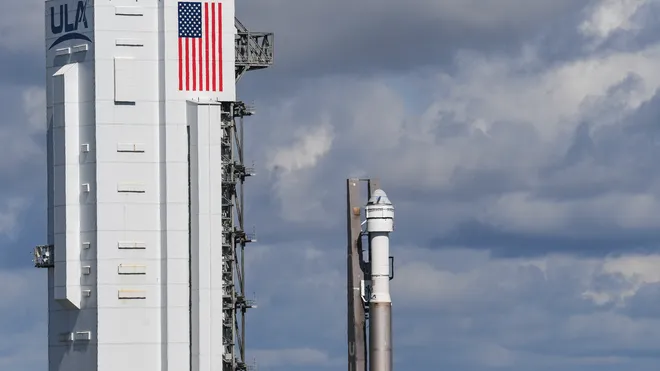In a mission that continues to redefine global connectivity, SpaceX is once again preparing to send a batch of Starlink satellites into orbit. This upcoming Thursday, the company will launch the Starlink Group 6-74 mission, marking another significant step in Elon Musk’s vision of building a satellite internet constellation that wraps around the planet.
The launch, slated to take place from Cape Canaveral Space Force Station in Florida, will see a Falcon 9 rocket carry dozens of smallsats into low Earth orbit (LEO). While the exact number of satellites hasn’t been publicly confirmed yet, typical Starlink missions in this group series carry around 20 to 23 spacecraft per launch. These satellites are part of the sixth shell of the Starlink mega-constellation, which is focused on enhancing coverage and capacity across more populated regions.
A Routine Launch in an Ambitious Project
Although SpaceX has launched dozens of Starlink missions over the past few years, each one plays a critical role in the bigger picture. The Starlink project aims to provide high-speed internet access even in the most remote corners of the Earth—places where laying traditional fiber-optic cables or setting up cellular towers simply isn’t feasible.
By deploying thousands of interconnected satellites, SpaceX hopes to offer a service that rivals or surpasses terrestrial internet networks. The upcoming Group 6-74 launch is just one piece of this complex and impressive puzzle, but it reflects how routine spaceflight is becoming for the private aerospace company.
Falcon 9: The Workhorse of SpaceX
The launch will be carried out using a Falcon 9 rocket, which has become SpaceX’s go-to vehicle for deploying payloads to space. The rocket’s first stage is expected to return to Earth after separation and land on one of SpaceX’s autonomous drone ships stationed in the Atlantic Ocean—most likely “A Shortfall of Gravitas” or “Just Read the Instructions”. These recovery efforts are part of SpaceX’s ongoing campaign to make spaceflight more cost-effective and sustainable through rocket reusability.
If successful, this landing would mark yet another notch in the belt for Falcon 9, whose reliability and reusability have changed the economics of space travel. Some boosters have already flown more than a dozen times, and this upcoming mission will likely feature one of these veteran cores.
Why Smallsats Matter
Starlink satellites are considered “smallsats,” short for small satellites. Typically weighing between 250 and 300 kilograms, these satellites are much smaller than traditional geostationary communications satellites, which often weigh several tons. The small form factor allows for multiple satellites to be packed into a single launch, which greatly enhances deployment efficiency.
Smallsats are part of a broader movement in aerospace, where size no longer dictates performance. These satellites are equipped with advanced technology, including phased-array antennas and krypton-powered ion thrusters, allowing them to maintain proper spacing and altitude within the constellation.
Building a Constellation, One Launch at a Time
With each new launch, the Starlink constellation grows stronger, both in numbers and capability. As of now, SpaceX has launched over 6,000 Starlink satellites, with thousands still operational in orbit. The ultimate goal is to have tens of thousands of these smallsats circling the planet, enabling seamless, low-latency internet access across the globe.
While the initial focus has been on underserved and rural areas, the technology is also gaining interest in other domains. Emergency responders, maritime operations, aviation, and even militaries have begun to see the advantages of having always-on, globally accessible communication networks.
The Bigger Picture: A New Era in Space
Beyond the technology and engineering marvels, the Starlink project—and missions like Group 6-74—symbolize a new era in space exploration and utility. Space is no longer just a place for government agencies or billion-dollar science experiments. It’s becoming a domain of infrastructure, commerce, and daily human life.
The idea that a small village in a remote region of Alaska or a ship in the middle of the Pacific can get high-speed internet via orbiting satellites would’ve seemed like science fiction just a decade ago. Today, it’s becoming reality, and SpaceX is leading that charge.
Potential Challenges Ahead
Of course, launching thousands of satellites doesn’t come without its challenges. Space debris, orbital congestion, and the potential for collisions are becoming serious concerns. SpaceX has committed to equipping its satellites with autonomous avoidance technology and has pledged to de-orbit defunct satellites responsibly. Still, with more private companies and nations joining the smallsat race, global cooperation and regulation will be necessary to ensure the safety and sustainability of Earth’s orbital environment.
Final Countdown
As Thursday approaches, the anticipation for the Starlink Group 6-74 mission builds. Each launch isn’t just a moment of engineering triumph—it’s another step toward a connected future. Whether it’s enabling a student in a remote area to attend virtual classes or supporting rescue teams during a natural disaster, Starlink is proving that the sky is no longer the limit—it’s just the beginning.
With clear skies and smooth systems, all eyes will be on the Cape this Thursday as another Falcon 9 rocket lights up the Florida coast and carries our connected future a little further into the stars.



